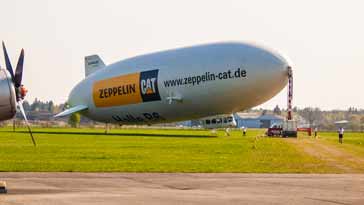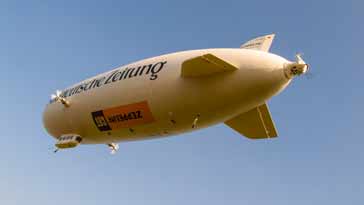Zeppelin Antenna
Although the Zeppelin antenna is not very widely used these days, it is an interesting concept and has its followers and its critics.
Home » Antennas & Propagation » this page
Zeppelin antennas includes:
Zeppelin antenna basics
The Zeppelin antenna gains its name from the fact that is was used by the Zeppelin airships as they were a form of antenna that fitted with the operational requirements of these early flying platorms.
Although the antenna has been in use for nearly 100 years, more recently there has been considerable discussion about its mode of operation and whether indeed it actually can work.
Nevertheless, the Zeppelin antenna has enabled people to transmit and receive and it was certainly useful for applications such as onboard the Zeppelin airships.

The Zeppelin and its antenna
The Zeppelin antennas worked for Zeppelin airships because they were able to trail the antenna behind them using a winch system to lower and raise it as required - it would certainly need to be raised for landing, etc.
The antennas were designed to operate at a length of half a wavelength, or multiples of this.

but the need for an antenna using a single trailing wire can be imagined
This meant the antennas could be quite long as the frequencies used ranged from the short wave bands to long wave bands.
They were fed with a quarter wavelength open wire feeder, which again would need to be quite long in some instances.
Zeppelin antenna basics
Essentially the Zeppelin antenna or Zepp as it is sometimes called, consists of a single wire element, fed using an open wire feeder. One of the two wires of the open wire feeder is connected to the single wire element, and the other is left open circuit.

The concept behind the antenna is that if two feeder wires carry equal and opposite currents they will cancel each other out and not radiate.
As the end feed point has a high impedance it implies that little or no current flows and therefore it is permissible for one end of the feeder to remain open circuit.
The radiating element was meant to be a half wavelength, or multiple of half wavelengths at the operating frequency. Being end fed it would present a high impedance to the feeder.
The feeder was also designed so that it would be a quarter wavelength or multiple of quarter wavelengths at the operating frequency and this would act as an impedance transformer, transforming the very high impedance of the antenna at its feed point to a far more manageable low impedance at the end of the open wire feeder.
Zeppelin critics
Two well known radio amateurs, Les Moxon G6XN and Dud Charman, G6CJ were very sceptical about its mode of operation, and whether indeed it could work at all.
One wonders whether the current levels in the two lines of the open feeder would be balanced and equal. It seems that many examples placed meters in the feed line and surprisingly they did seem relatively balanced.
Well even if the Zepp antenna does not work, it is a nice idea, and probably better to use something like an end fed half wave antenna with a counterpoise and then also think of the graceful Zeppelin airships. Even today these airships have their place, and now they are safer because they use helium rather than hydrogen!

 Written by Ian Poole .
Written by Ian Poole .
Experienced electronics engineer and author.
More Antenna & Propagation Topics:
EM waves
Radio propagation
Ionospheric propagation
Ground wave
Meteor scatter
Tropospheric propagation
Antenna basics
Cubical quad
Dipole
Discone
Ferrite rod
Log periodic antenna
Parabolic reflector antenna
Phased array antennas
Vertical antennas
Yagi
Antenna grounding
Installation guidelines
TV antennas
Coax cable
Waveguide
VSWR
Antenna baluns
MIMO
Return to Antennas & Propagation menu . . .


